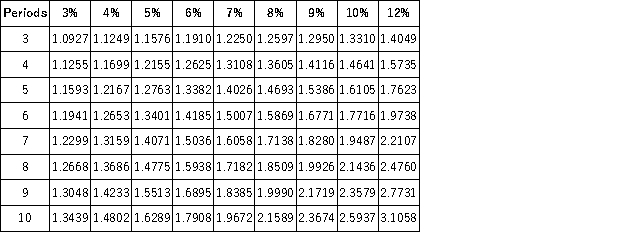Present Value of 1  Future Value of 1
Future Value of 1  Present Value of an Annuity of 1
Present Value of an Annuity of 1  Future Value of an Annuity of 1
Future Value of an Annuity of 1  The present value factor for determining the present value of $6,300 to be received three years from today at 10% interest compounded semiannually is 0.7462.
The present value factor for determining the present value of $6,300 to be received three years from today at 10% interest compounded semiannually is 0.7462.
n = 6 semiannual periods, i = 5% semiannual interest rate; from the PV of $1 table the factor is 0.7462
Definitions:
Metal Conductors
Materials that allow the flow of electrical current due to their free electron movement.
Insulating Material
Materials that hinder the flow of electric current, used to protect against electrical shocks and to contain electrical wiring.
Surface Area
The amount of surface of an object, generally expressed in square inches, square feet, etc.
Capacitance
The ability of a system to store electrical charge when voltage is applied, typically measured in Farads.
Q5: When a judge issues a contempt citation
Q11: The Supreme Court decision in Branzburg v.Hayes
Q12: When plaintiffs in trespass cases are unable
Q17: A client is prescribed to receive 2
Q18: One area that is mainly a criminal
Q18: A client is prescribed clarithromycin (Biaxin)500 mg
Q44: Present Value of 1 <img src="https://d2lvgg3v3hfg70.cloudfront.net/TB6316/.jpg" alt="Present
Q64: A company has an investment in 9%
Q65: Present Value of 1 <img src="https://d2lvgg3v3hfg70.cloudfront.net/TB6316/.jpg" alt="Present
Q140: On February 15, Jewel Company buys 7,000